First Bite: How We Learn to Eat
Why do we like to eat what we eat? This book explores food and the malleability of taste, memory, family and marketing, asking us to pause and re-examine what we think we know.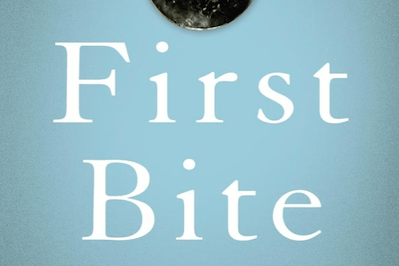 Basic Books
Basic Books
Basic Books
“First Bite: How We Learn to Eat” A book by Bee Wilson
Two years ago, the fingernails of my son, then 4 years old, began to fall off. It was a painful, messy affair. He would wake up in the middle of the night, crying, another nail gone and his sheet stained with blood. Next to go were his toenails. Alarmed, my wife and I did what any parents would do: searched for answers on Google. There was only one explanation we could imagine — malnutrition — and Google confirmed our fears. We scrawled through image after image of cracked and missing fingernails caused by a lack of essential nutrients. They looked exactly like the nails of our son.
When I dropped him off at preschool the following morning, I explained to his teacher, who had grown curious about the Band-Aids wrapped around the tips of his fingers, that our son was malnourished. “That’s why his fingernails are falling off,” I said, as if this discovery was proof that I was an involved parent. She didn’t say anything in reply, as I recall, but I’m sure she had plenty of questions.
It turned out that he wasn’t malnourished, only suffering a rare side effect of Hand, Foot, and Mouth disease, a common viral infection among young children. But that we considered malnutrition a possibility is a hint that he wasn’t the best eater. He didn’t touch vegetables, couldn’t stand the smell of eggs, and had stopped drinking milk. He didn’t eat beans or rice or quesadillas. Recently, he had even given up pizza and French fries. Other parents had to limit how many strawberries their kids ate. Our son refused fruit of any kind.
So when I opened up Bee Wilson’s most recent book, “First Bite: How We Learn to Eat,” it was not simply as a disinterested reviewer. I wanted answers. My wife started a community-supported agriculture group, and has worked at our local farmer’s market. Except for meat, I will eat virtually anything. So what the hell was going on with our son? What were we doing wrong?
The good news — and despite the many harrowing stories within, “First Bite” is a fundamentally optimistic book — is that there isn’t much to worry about. It’s normal for young kids to be picky eaters and extremely distrustful of new food, a phase they typically grow out of around the age of 6 or 7. But not always, which is the bad news. Wilson, an accomplished food journalist and historian, introduces us to a range of characters whose selective eating only intensifies with age. A teenager chooses a college based on the plain cheese pizza it serves twice a day in the cafeteria, one of the rare items she can tolerate. An adult woman subsists for years on instant noodles, Oreo cookies, and ketchup sandwiches. Even more distressing are the cases involving children on the autistic spectrum, who often struggle with feeding disorders. One 3-year-old boy eats nothing but grilled cheese sandwiches and hot dogs. A 5-year-old girl becomes so selective that she eventually stops eating entirely, and has to be force fed through a gastronomy tube. Yet after only two weeks of intensive treatment, both children were trying dozens of different foods, and the girl’s tube was removed. In other words, they had learned to eat.
That we can learn to eat well doesn’t mean it will be easy, of course. We should think of it as a skill, Wilson writes, and the development of any skill requires effort. For severe disorders — like the two autistic children — the treatment involves exposing patients to pea-sized amounts of various foods throughout the day, without responding to screaming fits. (As any parent knows, this not-responding business requires self-control worthy of Yoda.) And although there are certain guidelines, Wilson is honest enough to acknowledge that in the real world, parents will grab for whatever tool is closest to get the job done. “The way you teach a child to eat well is through example, enthusiasm, and patient exposure to good food,” she writes. “And when that fails, you lie. In Hungary, children are taught to enjoy eating carrots by being told that they bestow the ability to whistle.”
What doesn’t seem to work is coercion. This isn’t surprising — who likes to be forced to do anything, after all? — but is nonetheless disappointing, as I hoped Wilson might have discovered a case study or two that would justify loud threats when my son declares a meal disgusting. In one experiment, preschool children in Pennsylvania were offered two kinds of soup over an 11-week period. Sometimes the children were allowed to eat whatever amount they wanted; at other times, an adult instructed them, in a calm voice, to finish their soup. Even this mild form of nagging led the children to eat less soup, and to report negative feelings about the soup. One child’s response sounded very familiar: “You always say that to us and I don’t want it. It’s so annoying.”
For parents, “First Bite” offers plenty of useful advice. Research suggests, for example, that babies between 4 and 7 months are extremely receptive to new flavors. Not at first, of course — when offered a novel vegetable, Wilson writes, “a baby will often make the most dramatic expressions of horror and woe, screwing up the mouth and nose in ways that, on an adult face, would suggest torture.” But if we ignore those reactions, babies will usually come around quickly, and their flavor window will widen. This goes against the typical parental strategy, which is to introduce only the most palatable of foods — sweet potatoes, butternut squash — and save the tough vegetables for later.
That I scoured this book for feeding hints doesn’t mean it is primarily an advice book. “First Bite” is more an exploration of overlapping topics — food, family, memory, marketing — with reminders, again and again, to pause and re-examine what we think we know. Take flavor, for example. It turns out that the largest family in the human genome is dedicated to our olfactory receptors — the cells we use to smell — with humans able to distinguish among 10,000 separate scents. When combined with other senses — sight, texture — the number of flavors our brains can generate is endless. One Yale professor, Gordon Shepherd, considers flavor recognition to be the core difference between humans and other mammals. It is certainly primal. Through brain-scanning technology, Shepherd has shown that the images we have of flavors are processed in the prefrontal cortex, the section of the brain we use for abstract thought, decision-making, and memory.Another not so simple topic is hunger. How does it feel to be hungry? Despite experiencing mild hunger most days, usually in the late afternoon, I find it difficult to describe the sensation. It’s not exactly painful, or sharp, or localized in any particular area, like my stomach. If I were to try to describe hunger to someone who hadn’t experienced it, I’d fail miserably. Nor can it be defined as simply the need for calories. Being “full” is to some extent a state of mind. In one study, researchers heated up apple juice, put it in a bowl and called it “apple soup.” People who ate the soup with a spoon were left much more full than when they drank the juice cold in a cup. We associate “soup” with food, and food is filling. “We think of it as a food that will kill hunger,” Wilson writes, “and so it does.”
Of course, there is also another type of hunger, the sort that kills more than 3 million children each year. But this also requires that we pay attention to the subtle dance among food, culture and cognition. In 1996, a French nutritionist named André Briend came up with a high calorie peanut paste to combat acute child malnutrition. Before the product, which he called Plumpy’Nut, acute malnutrition was treated either with hospital stays or through a fortified milk mixture. But many mothers didn’t want to be separated from their children, and the mixture needed to be diluted with safe drinking water, which many households didn’t have access to. Plumpy’Nut solved both problems.
The results have been miraculous — in Africa, at least. But in Bangladesh, which has one of the highest rates of child hunger in the world, many mothers rejected the product. Some said its color looked like excrement. Others were revolted by the peanut smell. They complained that it gave their children diarrhea, or made them vomit. Peanuts are not part of the diet in Bangladesh, and so it was hard to convince parents that what was coming out of the tube was actually food. Nutritionists are currently working to create a Plumpy’Nut-style product out of rice, lentils, chickpeas and other mainstays of the Bangladeshi diet. “A child’s hunger cannot be canceled by food per se,” Wilson writes. “It matters very much what the food is.”
For her epilogue, Wilson has chosen the title “This Is Not Advice.” She knows that people are weary of being lectured at, and that there is scant evidence to suggest that simply telling people to eat better does any good. But there are nuggets of wisdom deposited throughout the book that, taken together, point toward a new way of thinking about food. It takes an extraordinary amount of willpower to spend our days eating things we don’t like, which is one of the reasons diets typically don’t work. The key is to change what we like. This is not easy, certainly. But as Wilson writes, “If it’s possible to train a severely autistic three-year-old to love fifty-three different nutritious foods, there’s hope for us all.”
Your support matters…Independent journalism is under threat and overshadowed by heavily funded mainstream media.
You can help level the playing field. Become a member.
Your tax-deductible contribution keeps us digging beneath the headlines to give you thought-provoking, investigative reporting and analysis that unearths what's really happening- without compromise.
Give today to support our courageous, independent journalists.
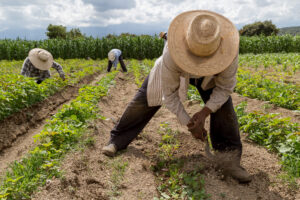
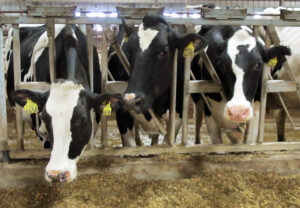
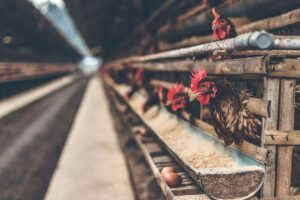


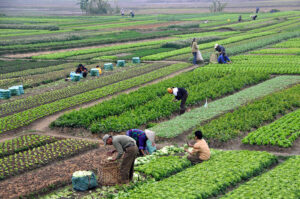
You need to be a supporter to comment.
There are currently no responses to this article.
Be the first to respond.